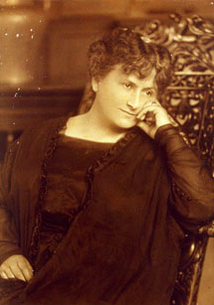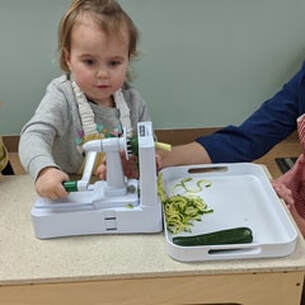The Montessori Method
Dr. Maria MontessoriWhat does Montessori mean?
In the early 1900s, Italian physician Dr. Maria Montessori revolutionized our understanding of the way children learn. In her work with children of preschool age, she saw that they naturally absorb knowledge and information from the world around them, and they are eager to practice their growing skills. Montessori created a rich curriculum based on her findings. She introduced what are now universally accepted teaching and materials techniques, such as individualized learning and the use of child-sized furniture and materials. Is there a curriculum? How do I learn about it? Guides learn a broad curriculum as part of their training; they also learn to keenly observe children and to evaluate individual levels of readiness for lessons. This training is supplemented yearly through workshops and seminars. We invite and encourage parents to learn about the curriculum by attending parent education events held throughout the year. Why do Montessori classes have mixed ages? Mixed age groups naturally reflect family, neighborhood, and work-place environments. In a mixed-age classroom, younger children have the opportunity to learn from older classmates; older children gain confidence from sharing their experience. This interaction fosters independent learning and creates a stimulating classroom atmosphere. |
A Children's House- 1900'sWhat is the student-teacher ratio? Do Montessori students have too much freedom?
Class size is designed to be large enough to foster independence and an optimal learning environment, but small enough to allow for appropriate guidance and supervision—2 adults for 24-28 children. Children in a Montessori classroom choose their own work within guidelines set by the Guide. This framework offers a great deal of freedom, but each freedom has corresponding responsibilities. How do Guides deal with discipline? Conflicts arise naturally out of interaction between different people. The balance of freedom and responsibilities found in the Montessori classroom teaches each child to have respect for self, for others, for the classroom, and for the materials. In addition, with guidance from guides and staff, children at Heartland are taught conflict resolution skills. They begin the lifelong process of learning to respect others’ opinions and to search for mutually beneficial solutions for conflicts. |
Making Zucchini NoodlesHow will I know how my child is doing?
Twice a year, the Guide will meet with parents for in-depth conferences. Throughout the school year, parents are encouraged to schedule observations of their child in the classroom, to educate themselves about the curriculum, and to contact the Guide with questions or concerns. Will my child be prepared for the “real world?" The real world many of us experience as adults can be described as people working together with other people of varying ages and backgrounds, in a productive and cooperative atmosphere. When seen in this light, our preschool and kindergarten classrooms reflect closely the “real world.” Are all Montessori schools the same? Montessori is not a trademark name and simply refers to the Montessori method of teaching, so child care or other facilities may use this name without subscribing to Dr. Montessori’s principles. Though different Montessori schools will share similarities--from a few to many--each school is independent. Learn more about Montessori education through these resources. |



